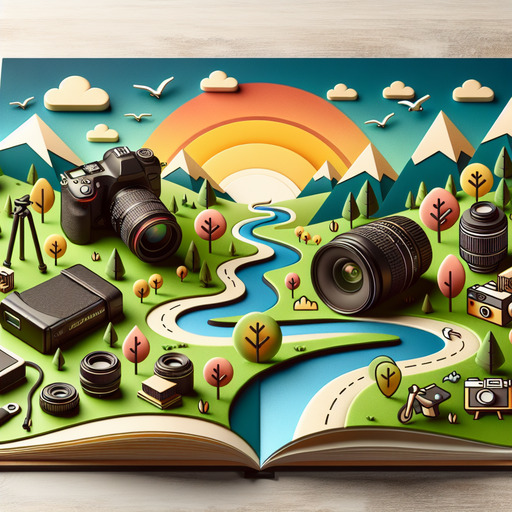
-
Table of Contents
Discover the essential photography gear every beginner needs to capture stunning shots! Start your journey with the right tools. Learn more here.
Introduction
Photography Gear for Beginners: What You Really Need
Embarking on the journey of photography can be both exciting and overwhelming, especially when faced with the myriad of equipment options available. For beginners, understanding what gear is essential can make a significant difference in the learning curve and overall experience. This guide aims to simplify the process by highlighting the fundamental photography gear that every novice should consider. From cameras and lenses to tripods and memory cards, we will explore the basic tools that will help you capture stunning images and develop your skills without unnecessary complexity or expense. Whether you’re interested in landscape, portrait, or street photography, having the right gear is the first step towards creating compelling photographs.
Essential Photography Gear for Beginners: What You Really Need to Get Started
Embarking on the journey of photography can be both exciting and overwhelming, especially when faced with the myriad of gear options available. For beginners, it is crucial to focus on essential equipment that will provide a solid foundation without breaking the bank. Understanding what you really need to get started can help streamline your choices and ensure you invest in the right tools.
First and foremost, a camera is the cornerstone of any photographer’s kit. While there are numerous types of cameras on the market, a digital single-lens reflex (DSLR) or a mirrorless camera is often recommended for beginners. These cameras offer a good balance between quality, versatility, and ease of use. Entry-level models from reputable brands such as Canon, Nikon, and Sony provide excellent image quality and a range of features that can grow with you as your skills develop. Additionally, these cameras often come with a kit lens, typically an 18-55mm zoom lens, which is versatile enough for various types of photography, from landscapes to portraits.
In addition to the camera, a sturdy tripod is an essential piece of equipment. A tripod provides stability, allowing you to take sharp images in low light conditions or when using slow shutter speeds. It is particularly useful for landscape photography, long exposures, and self-portraits. When choosing a tripod, consider factors such as weight, height, and build quality. Lightweight tripods made from materials like aluminum or carbon fiber are ideal for beginners who may need to carry their gear to different locations.
Another critical component of your photography gear is a memory card. High-capacity and high-speed memory cards are essential for storing your images and ensuring that your camera can write data quickly, especially when shooting in burst mode or recording video. Brands like SanDisk and Lexar offer reliable options. It is advisable to have multiple memory cards to avoid running out of storage space during a shoot.
A camera bag is also a must-have for protecting your gear and making it easy to transport. Look for a bag that offers adequate padding, multiple compartments, and weather resistance. This will help keep your camera, lenses, and accessories safe from damage and organized for easy access.
While the aforementioned items are fundamental, there are a few additional accessories that can enhance your photography experience. A lens cleaning kit is indispensable for maintaining the clarity and quality of your images. Dust and smudges on your lens can significantly affect image sharpness, so having a cleaning solution, microfiber cloth, and blower brush on hand is essential.
Furthermore, investing in an extra battery is a wise decision. Running out of battery power during a shoot can be frustrating and limit your ability to capture important moments. Having a spare battery ensures that you are always prepared, especially during long sessions or when traveling.
Lastly, consider acquiring a basic photo editing software. Post-processing is an integral part of modern photography, allowing you to enhance and refine your images. Programs like Adobe Lightroom and Photoshop offer powerful tools for editing and organizing your photos. While these programs may have a learning curve, numerous tutorials and resources are available to help beginners get started.
In conclusion, starting with the right photography gear can make a significant difference in your learning experience and the quality of your work. By focusing on essential items such as a reliable camera, sturdy tripod, high-capacity memory card, protective camera bag, lens cleaning kit, extra battery, and basic photo editing software, you can build a solid foundation for your photography journey. As you gain experience and confidence, you can gradually expand your gear to suit your evolving needs and creative vision.
Q&A
1. **What essential photography gear do beginners need?**
– **Camera:** A DSLR or mirrorless camera with interchangeable lenses.
– **Lens:** A versatile zoom lens (e.g., 18-55mm) or a prime lens (e.g., 50mm f/1.8).
– **Memory Card:** At least one high-capacity, high-speed SD card.
– **Tripod:** A sturdy, lightweight tripod for stability.
– **Camera Bag:** A protective bag to carry and organize gear.
– **Extra Batteries:** Spare batteries to ensure you don’t run out of power.
– **Lens Cleaning Kit:** Tools to keep lenses clean and free of dust.
– **External Hard Drive:** For backing up and storing photos.
– **Editing Software:** Basic photo editing software like Adobe Lightroom or free alternatives like GIMP.